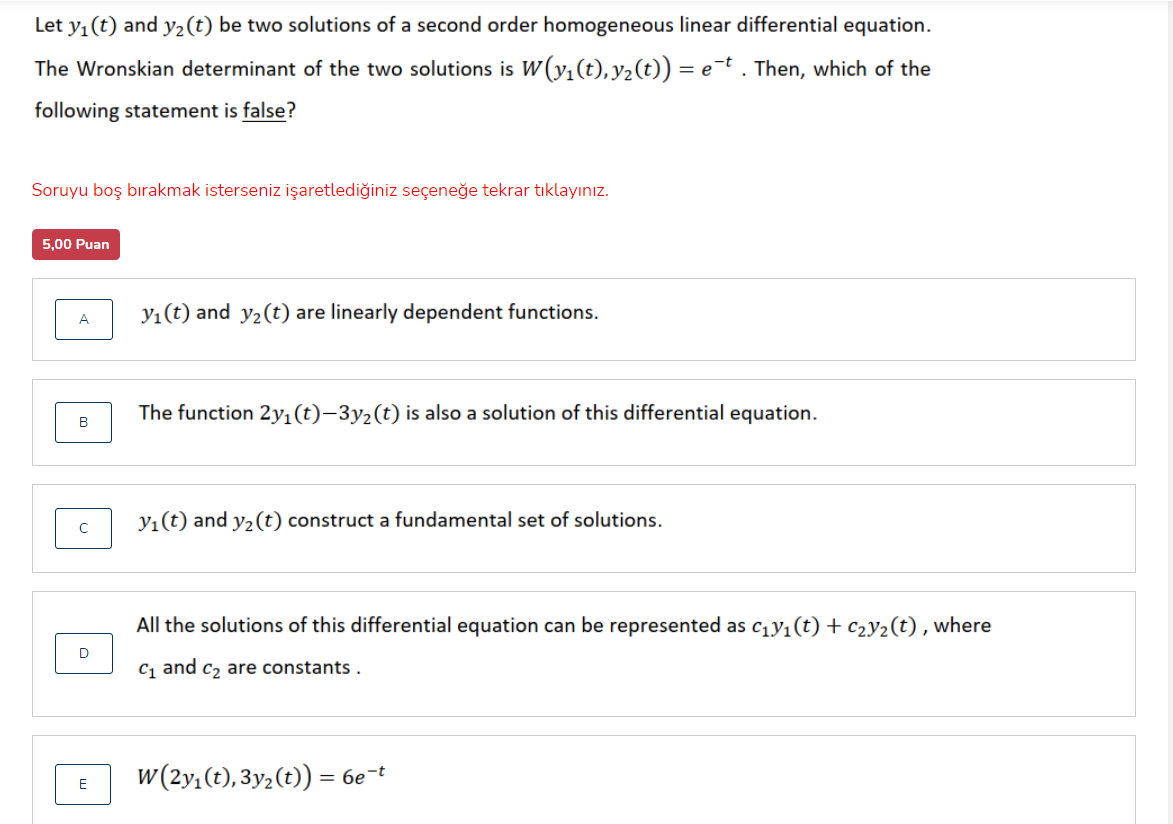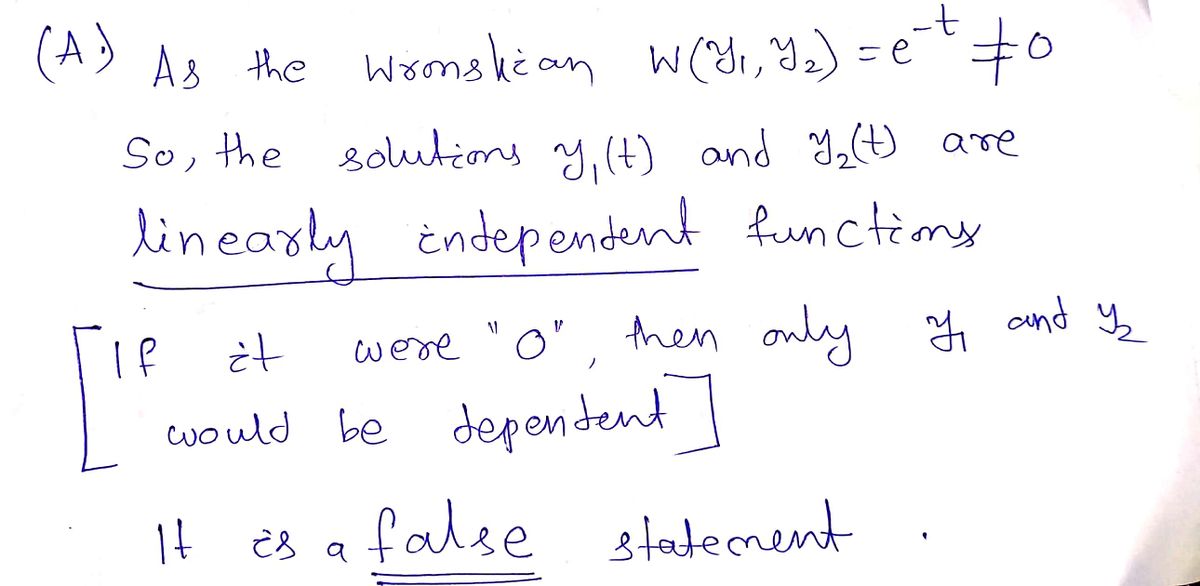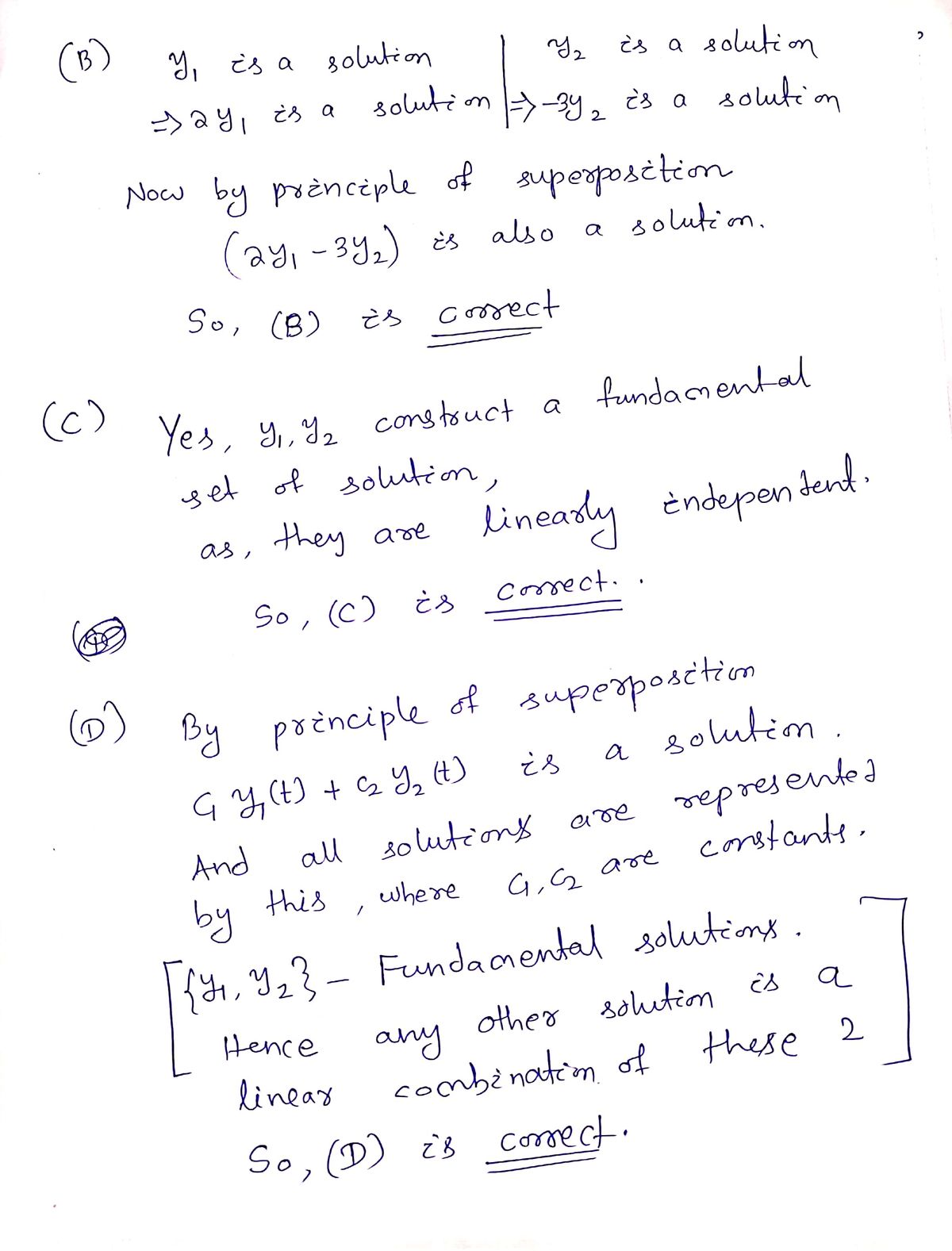Let y, (t) and y2(t) be two solutions of a second order homogeneous linear differential equation. The Wronskian determinant of the two solutions is W(y,(t), y2(t)) = e¬t . Then, which of the following statement is false? Soruyu boş bırakmak isterseniz işaretlediğiniz seçeneğe tekrar tıklayınız. 5,00 Puan Yı(t) and y2(t) are linearly dependent functions. A The function 2y,(t)–3y2(t) is also a solution of this differential equation. B y1(t) and y2(t) construct a fundamental set of solutions. All the solutions of this differential equation can be represented as c1y1(t) + c2y2(t) , where c, and c, are constants . w (2y,(t), 3y2(t)) = 6et E
Let y, (t) and y2(t) be two solutions of a second order homogeneous linear differential equation. The Wronskian determinant of the two solutions is W(y,(t), y2(t)) = e¬t . Then, which of the following statement is false? Soruyu boş bırakmak isterseniz işaretlediğiniz seçeneğe tekrar tıklayınız. 5,00 Puan Yı(t) and y2(t) are linearly dependent functions. A The function 2y,(t)–3y2(t) is also a solution of this differential equation. B y1(t) and y2(t) construct a fundamental set of solutions. All the solutions of this differential equation can be represented as c1y1(t) + c2y2(t) , where c, and c, are constants . w (2y,(t), 3y2(t)) = 6et E
Linear Algebra: A Modern Introduction
4th Edition
ISBN:9781285463247
Author:David Poole
Publisher:David Poole
Chapter4: Eigenvalues And Eigenvectors
Section4.6: Applications And The Perron-frobenius Theorem
Problem 69EQ: Let x=x(t) be a twice-differentiable function and consider the second order differential equation...
Related questions
Question

Transcribed Image Text:Let y, (t) and y2(t) be two solutions of a second order homogeneous linear differential equation.
The Wronskian determinant of the two solutions is W(y,(t), y2(t)) = e¬t . Then, which of the
following statement is false?
Soruyu boş bırakmak isterseniz işaretlediğiniz seçeneğe tekrar tıklayınız.
5,00 Puan
Yı(t) and y2(t) are linearly dependent functions.
A
The function 2y,(t)–3y2(t) is also a solution of this differential equation.
B
y1(t) and y2(t) construct a fundamental set of solutions.
All the solutions of this differential equation can be represented as c1y1(t) + c2Y2(t) , where
c, and c, are constants .
w (2y,(t), 3y2(t)) = 6et
E
Expert Solution
Step 1

Step 2

Trending now
This is a popular solution!
Step by step
Solved in 3 steps with 3 images

Knowledge Booster
Learn more about
Need a deep-dive on the concept behind this application? Look no further. Learn more about this topic, advanced-math and related others by exploring similar questions and additional content below.Recommended textbooks for you

Linear Algebra: A Modern Introduction
Algebra
ISBN:
9781285463247
Author:
David Poole
Publisher:
Cengage Learning

Linear Algebra: A Modern Introduction
Algebra
ISBN:
9781285463247
Author:
David Poole
Publisher:
Cengage Learning